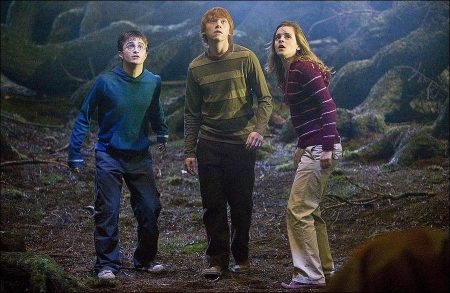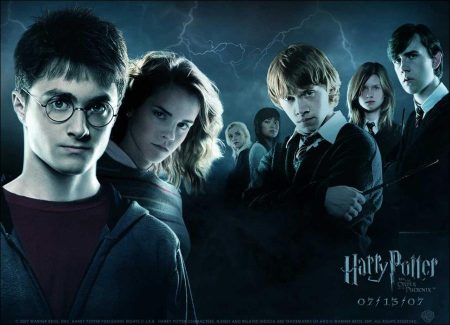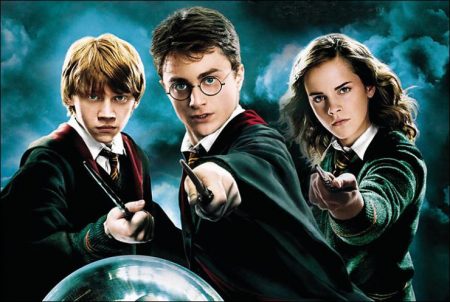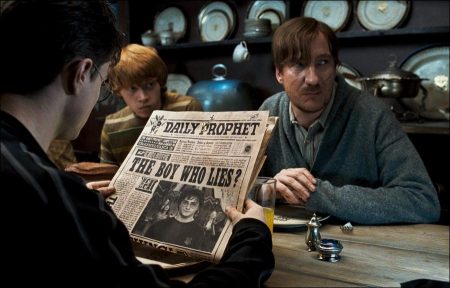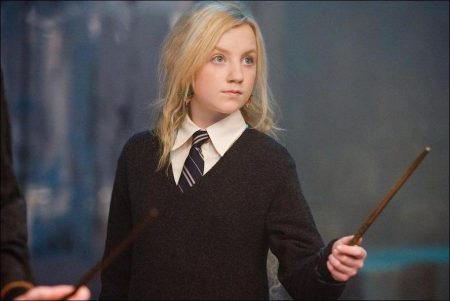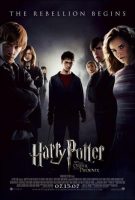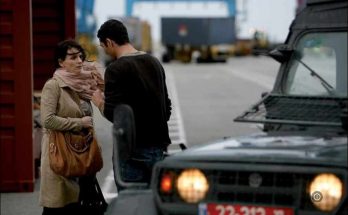Tagline: The Rebellion Begins.
Harry Potter and the Order of the Phoenix. It has been a long, lonely summer for Harry Potter as he awaits his fifth year of study at Hogwarts School of Witchcraft and Wizardry. It’s bad enough that he must endure living with the odious Dursleys, but he hasn’t received even a note from his classmates and closest friends, Ron Weasley and Hermione Granger.
And there has not been any word from anyone in the aftermath of his confrontation with the evil Lord Voldemort. The letter that does arrive is not the kind for which he was hoping— pronouncing that Harry is about to be expelled from Hogwarts for illegally using magic outside of school and in the presence of a Muggle, namely his obnoxious cousin, Dudley.
Never mind that it was in defense against an unprovoked and inexplicable attack by two Dementors. Harry’s only hope is to defend himself at what amounts to hardly more than a kangaroo court orchestrated by the Minister of Magic, Cornelius Fudge, who has his own reasons for wanting the young wizard to be gone for good.
Much to Fudge’s chagrin, Harry is acquitted—thanks largely to the intervention of Hogwarts’ venerable Headmaster, Albus Dumbledore—but his return to Hogwarts is, for the first time, apprehensive and uncomfortable.
Harry has learned that much of the wizarding community has been led to believe that the story of the teenager’s recent encounter with Voldemort is an outright lie, putting Harry’s integrity in question. Feeling ostracized and alone, Harry is beset by nightmares that seem to foretell sinister events. Worse, the one person whose counsel he needs most, Professor Dumbledore, is suddenly acting strangely distant from the confused and hurt young wizard.
Meanwhile, in an effort to keep an eye on Dumbledore and keep the Hogwarts students—especially Harry—in line, Fudge has appointed a new Defense Against the Dark Arts teacher, the duplicitous Professor Dolores Umbridge. But Professor Umbridge’s “Ministry-approved” course of defensive magic leaves the young wizards woefully unprepared to defend themselves against the Dark Forces threatening them.
So, at the prompting of Hermione and Ron, Harry is convinced to take matters into his own hands. Meeting secretly with a small group of students who name themselves “Dumbledore’s Army,” Harry teaches them how to defend themselves against the Dark Arts, preparing the courageous young wizards for the extraordinary battle that he knows lies ahead.
Harry Potter and the Order of the Phoenix is a 2007 British-American fantasy film directed by David Yates and distributed by Warner Bros. Pictures. It is based on the novel of the same name by J. K. Rowling. Live-action filming took place in England and Scotland for exterior locations and Leavesden Film Studios in Watford for interior locations from February to November 2006, with a one-month break in June. Post-production on the film continued for several months afterwards to add in visual effects. The film’s budget was reportedly between £75 and 100 million ($150–200 million). Warner Bros. released the film in the United Kingdom on 12 July 2007 and in North America on 11 July, both in conventional and IMAX theatres; it is the first Potter film to be released in IMAX 3D.
About the Production: A New Order
The fifth year of study at Hogwarts School presents a turning point, not only for Harry Potter but for his friends and classmates as well. No longer children, they are suddenly faced with the choices and challenges of young adulthood…and the consequences that come with them. Harry—dealing with the return of Lord Voldemort and the death of his friend Cedric Diggory—has been forced to grow up perhaps more quickly than the others and is compelled to take on responsibilities he never could have expected.
Making his entrance into the world of Harry Potter, director David Yates remarks, “It was exciting to me that this story takes place at a time in the students’ lives when they are maturing and everything is becoming more complicated. It is about rebellion and about understanding the limits of adulthood; it’s about discovering how difficult the world can become and how sometimes you have to make your own way in that world. So it’s a blend of all the magic and fun that J.K. Rowling puts into her books and all the wonderful and amazing things that have been set in motion in the previous films, together with issues and ideas that are a bit more complex and touching on things that are quite grown up.”
David Heyman, the producer of all of the Harry Potter features, notes that the nature of the story was what led him to choose Yates—an award-winning British television director—to helm the fifth installment of the series. “David is a fantastic actors’ director, and he has also shown that he can handle political subject matter in an entertaining way. This is not a political film, per se, but the politics of the magic world are very much at play here. We thought David would handle that brilliantly, and he has.
He came in with a great passion for the material and a great sense of the emotional journey of the characters. He understood that, for all the spectacle, what we and the audience connect with are the characters.
“It was really rewarding how the kids embraced him and he them,” Heyman adds. “Like their characters, they are growing up and David treated them as equals. He realized that they know their characters well and was always soliciting their ideas and getting them to bring more of themselves to their roles in ways they hadn’t before. That was exciting for them and for us.”
Returning in the role of Harry Potter, Daniel Radcliffe attests, “I loved working with David. He is a delightful man, very soft-spoken, and yet I have never been pushed as hard as I was on this film, partly because of the nature of the story and partly because of his directing. He never settled for less; he always wanted me to go deeper, which was exactly what I felt I needed. He is a brilliant director.”
“David is wicked; we got on really well with him,” agrees Rupert Grint, the actor behind the role of Harry’s best mate, Ron Weasley. “He was quite a bit different from the other directors because he has a more relaxed approach, but he always gave great suggestions.”
Emma Watson, who plays Harry’s loyal friend Hermione Granger, adds, “It was really lovely because David listened to what we had to say about our characters. He was respectful of the fact that we have been playing these people for five films now. He appreciated the history and the special relationship that Dan, Rupert and I share because it adds truth to the friendship between Harry, Ron and Hermione. David really looks for truth in all of the characters.”
Yates was working from a script by another newcomer to the fold, screenwriter Michael Goldenberg. “I was thrilled when David Heyman called and asked me to be involved,” Goldenberg recalls. “The great thing about working on a Harry Potter film is that it’s something bigger than yourself, so there is no question of ego getting in the way. I know it’s a cliché, but it’s a magical thing to be a part of what has become this amazing phenomenon and to have a role in helping to bring it to the screen; I felt a great sense of responsibility in the best sense of the word. David Heyman made it fun, which is what a Harry Potter film should be, and Jo (J.K. Rowling) was incredibly sweet and could not have been more generous in giving us room to make the best film possible. David Yates was intent on keeping every moment of the story grounded in reality, and I think that’s what makes the magic even more magical.
“Obviously, it was very important to stay true to the spirit of the book,” Goldenberg observes. “This story, in particular, is so much about Harry’s journey. It’s about Harry coming of age and realizing that things aren’t as black and white as they initially appeared… and the adults he idealized are perhaps more flawed and human than he thought. We wanted to examine those themes, not only with Harry but also with Ron and Hermione. All of the kids are dealing with a more complex world than when they first entered Hogwarts.”
In “Harry Potter and the Order of the Phoenix,” Harry’s journey begins as he is enduring another interminable summer with the Dursleys. Making the time even more unbearable, he is feeling cut off from his closest friends, Ron and Hermione, who, inexplicably, have not written to him all summer—not only hurtful but odd, especially following the tumultuous and tragic events of the previous year.
Producer David Barron offers, “Poor Harry. After everything he’s been through, he has been shut away in Little Whinging with absolutely no news from anybody. He thinks everybody is ignoring him—Ron, Hermione, even Dumbledore—and I think, coupled with the normal stresses of being a teenager, it’s just a bit much for him to bear. It’s a side of Harry we haven’t seen before. He doesn’t start out quite as level-headed as he has been in the past…not without justification, though.”
With that in mind, the insufferable bully Dudley Dursley has chosen the wrong time to engage in his favorite pastime but their confrontation is abruptly halted when, without warning, a pair of Dementors attack and Harry is forced to produce a Patronus charm to save both their lives. Only moments later, a letter arrives at Privet Drive informing Harry that he has been expelled from Hogwarts for his illegal use of magic, a decree that delights the Dursleys even as it sends Harry to the edge of despair.
But hope is not lost. That night, a group of Aurors (Dark wizard catchers)— including Alastor ‘Mad-Eye’ Moody, Kingsley Shacklebolt and don’t-call-me- Nymphadora Tonks—arrive at his door and whisk him away, telling Harry that Dumbledore has arranged for him to appeal his expulsion at a formal hearing at the Ministry of Magic.
First, however, they must take a detour to a secret location, where Harry will discover there has been a lot going on while he has been sequestered in Little Whinging. Arriving at number twelve Grimmauld Place—which, if you don’t know is there, is not there—Harry is reunited with Ron and Hermione. And it is there that he is first introduced to the Order of the Phoenix, “a clandestine organization originally formed by Dumbledore to combat the forces of evil represented by Voldemort,” David Heyman explains. “They meet in secret, in large part because Fudge, who is in charge of the Ministry of Magic, feels threatened by Dumbledore and is trying to repress stories of Voldemort’s return. But those in the Order know that Voldemort is gathering followers and his power is growing.”
Harry learns that his parents had been among the original Order of the Phoenix, and counted among its current members are Molly & Arthur Weasley, Remus Lupin, Severus Snape and, to his surprise and delight, Sirius Black, who has opened the Black family home as the meeting place for the Order of the Phoenix. David Yates says, “Sirius can’t go out because he’s still a wanted man. He can do very little to help, so the house is his gift to the Order.”
Gary Oldman, who was introduced as Sirius Black in “Harry Potter and the Prisoner of Azkaban,” relates, “Sirius is a man very much haunted by being wrongly accused and imprisoned at Azkaban for so many years. He is emotionally rooted in the old days when they were the young Order. In some ways, his relationship with Harry is like reliving the past. Harry is so much like his father, James, who was Sirius’ best friend, and Sirius is Harry’s godfather, which is something he does not take lightly. They share a special relationship, which has progressively gotten stronger.”
“It’s similar for Harry,” adds Radcliffe. “Sirius sees a younger version of James in Harry, and Harry gets to know more about his father through his relationship with Sirius.”
Harry also sees the Order of the Phoenix as a way to connect to his past…and more. “Officially, he’s not in the Order, but he already thinks of himself as very much a part of it because so many of his friends are in it. It means a lot to him because, of course, his parents were in the original Order. So it has quite an emotional importance to Harry, as well as giving him a chance to fight Voldemort,” Radcliffe states.
Ministerial Proceedings
Nevertheless, before Harry can think about fighting Voldemort, there is the matter of getting reinstated at Hogwarts. Harry must defend his actions at a hearing at the Ministry of Magic. The décor of the Ministry’s grand atrium is dominated by what production designer Stuart Craig describes as “a Soviet-style propaganda poster of Fudge.”
The designer adds that, despite the fact that people are literally flying down the hallways and memos are sent by the wizards’ own brand of air mail, “the Ministry is a bureaucracy. In England, government buildings tend to have a 19th century Victorian design, which is very decorative. The Ministry is also underground, so one of the first things we did was visit the oldest of the London Tube stations, many of which were done with an extravagant use of decorative ceramic tile. We put that into the mix and invented this underground world that is tunneled—because that’s what you would do underground—and wrapped in polished black ceramic tile, which is very interesting photographically. It was also challenging for (director of photography) Slawomir Idziak because it’s highly reflective.”
The Ministry atrium represents the largest set ever built for the Harry Potter films, at over 200-feet long, 120-feet wide and 30-feet high. It took more than 30,000 tiles to cover it, all of which had to be individually placed. Onscreen, the atrium will appear even bigger through the use of visual effects.
Escorted by Mr. Weasley, Harry enters the Ministry through the visitors’ entrance, which, for all intents and purposes, looks like an ordinary telephone box in the heart of London. “We thought it would be amusing to put the Ministry of Magic underneath the Muggle ministries, so we positioned the telephone box on the sidewalk very close to the Ministry of Defense. So, unbeknownst to the Muggles, underneath the British Ministry of Defense lies the Ministry of Magic,” Craig smiles.
Yates asserts, “One of the most fun elements of Harry Potter is how the wizarding world exists right next to our own Muggle world. It is sometimes just next door or right under our feet, if we only took the time to look. In fact, the two worlds often touch without us realizing it.”
At Harry’s hearing, things don’t go as Fudge had planned, thanks to Dumbledore and an unlikely eyewitness. Harry is cleared of all charges, but when he tries to talk to Dumbledore after the hearing, his beloved mentor rushes away, refusing to even make eye contact with the young wizard.
Reprising the role of Albus Dumbledore, Michael Gambon says, “Harry’s view of Dumbledore is that he is Harry’s rock, but he sees his rock is collapsing a bit in this movie. Dumbledore’s power is severely threatened, but that makes him more human, doesn’t it? It also gave me another level of his character to explore, which was an interesting experience.”
Still troubled by Dumbledore’s rebuff, Harry goes back to Hogwarts. But the test that awaits him, as well as his classmates, will be unlike anything they have ever faced.
Pink Is The New Black
Returning to Hogwarts, Harry is met with suspicious glances and the headline in The Daily Prophet twists Harry’s surname from Potter to “Plotter,” accusing him outright of lying about Lord Voldemort’s return. Feeling alone and ostracized, Harry even resists the overtures of Ron and Hermione to help and support him, believing that no one can understand what he is going through, including his closest friends.
Daniel Radcliffe acknowledges, “He is perhaps being a bit of a martyr, but I think that is part of what’s so appealing about Harry—he is not perfect. He’s a flawed character; that’s what makes him an incredibly human character. He is a really good person, but one who is mired in self-doubt a great deal of the time, and I think most people can relate to that.”
Yates says, “It’s an interesting time in Harry’s life because he feels vilified by The Daily Prophet, which is the newspaper of the Ministry of Magic, and people are starting to believe what they read. So when he comes back to Hogwarts, it doesn’t feel as familiar and safe as it always has in the past. He feels like an outsider, and he has to make a choice whether he is going to be defined by that or if he is going to hold onto the friendships that have gotten him through so much during his school years. There are moments where you see he could go either way, and that is the emotional center of the story, for Harry in particular.
“It was also a really interesting journey for Dan as an actor because it was a complex piece of acting work,” the director offers. “What’s great about Dan is he is fearless and so determined. There were times we’d be doing take after take and I could see the determination in his eyes to do it better on every take. I love that about him; he just wants his performance to be the absolute best he can make it.”
The start of the new year at Hogwarts brings with it a new addition to the faculty: Professor Dolores Umbridge, the new Defense Against the Dark Arts teacher, played by award-winning actress Imelda Staunton. Dressed in pink from head to toe, Professor Umbridge has a practiced smile and a honeyed singsong voice that belies her true nature.
Yates explains, “Fudge is paranoid about Dumbledore, who he thinks is after his job, so he places one of his most trusted lieutenants, Dolores Umbridge, at Hogwarts to act as his eyes and ears. She decides it’s her mission to clear out all the deadwood and conform Hogwarts to a very proper, orthodox way of teaching, staying within the box that the Ministry thinks they should all fit into, which results in a brilliant collision of values.”
“She’s definitely a wolf in sheep’s clothing,” Barron affirms. “She is nowhere near as ‘pink’ as she appears. I don’t think Fudge realizes quite what he’s doing by sending her there. I’m not sure even he knows what she is truly capable of.”
“She is all about control; order is paramount,” says David Heyman. “Anything that veers from her almost fascistic view of the way things should be has no hope of surviving in her world. She doesn’t believe that her students’ minds are vessels to be inspired but rather to be filled with the thoughts and ideas of the Ministry.”
The students at Hogwarts are not the only targets in Dolores Umbridge’s sights. The professors and staff are not any safer from her withering assaults. The Professor of Divination, Sybill Trelawney, played by Emma Thompson, could not have foreseen that Umbridge would dismiss her without a moment’s thought, while Charms Professor Flitwick, played by Warwick Davis, also falls short of Umbridge’s standards. Even the most respected professors, like Severus Snape, played by Alan Rickman, and Minerva McGonagall, portrayed by Maggie Smith, hold no sway over the pink-clad High Inquisitor. No one is safe from Umbridge’s relentless power grab. Not even Headmaster Albus Dumbledore.
Heyman adds, “Her overriding aim is to discredit Dumbledore and seize control of the school in the name of the Ministry. Nothing will stand in her way. And Imelda plays that with a smile.”
Staunton states, “There are many people like that, who are outwardly charming but there is a lot going on beneath the surface, which is a nice challenge to play. I don’t believe for a moment Dolores thinks she’s doing anything wrong. She believes she is doing what’s best and, of course, those are always the more frightening people because they don’t see any other side. There is no compromise.”
“Imelda just ate up this character,” Yates declares. “She is an incredibly gifted actress with wonderful comic timing. She was able to make Umbridge a woman of real complexity and not a caricature in any sense.”
Based on the way the character is described in the book, Staunton might have taken umbrage at being cast as Umbridge. “In the book, she is said to be very ugly and toad-like, so when people would tell me, ‘You’d be great for the part,’ I’d say, ‘Well, thanks very much,’” she laughs. “But it was great being asked to do this because the role is a gem and it is heaven to be a part of this world…not to mention I have a much higher status with my 12 year old at home now.”
Staunton also worked closely with costume designer Jany Temime to craft Umbridge’s look. “We had a lot of fun creating this sort of little round person, who’s not very nice,” the actress says. “I didn’t want her to have any hard edges. I thought it was important for her to appear soft and warm because, of course, she is neither.”
To physically suggest Umbridge’s softness, Temime reveals, “We gave Imelda a lot of padding because she’s actually a very thin woman.” The designer also used soft, fuzzy fabrics for Umbridge’s costumes to add to the illusion of softness and warmth. The color of the costumes, however, was predetermined by the book: pink, pinker and pinkest. “Every time we see her, she is in a different shade of pink,” says Temime. “As she gains power, the color gets stronger and more atrocious until she winds up in the deepest shade of cerise.”
The color scheme was carried over to Umbridge’s office, which Stuart Craig and his team decorated in shades of pink, and adorned with accents of lace and velvet and cute little knickknacks all around. The furniture style is French, which the designer says “is curvy, but has a sharpness to it,” a none-too-subtle hint to its owner’s real personality.
The most distinctive feature in the office is the display of some 200 kitten plates on the walls, some of whose feline inhabitants are decidedly vocal and active.
By contrast, Umbridge’s classroom is much more austere, in keeping with her style of teaching, which is severely limiting to her students, right down to the remedial textbook she gives them. Rupert Grint observes, “Umbridge has a rather strange teaching technique for a Defense Against the Dark Arts teacher. She believes progress should be discouraged and we should study theory with no practical application, which is ridiculous in a school of magic.”
Emma Watson agrees. “They are not really Defense Against the Dark Arts lessons anymore because the students are not allowed to use magic. And for an eager mind like Hermione’s, it’s like a slap in the face. She just can’t bear to sit there and be treated like an idiot; it just makes her blood boil because learning is everything to her.
For the first time, Hogwarts, which has always been this very secure, stable place for Harry, Ron and Hermione, is not safe. It’s scary and it’s dangerous.” Dangerous because the students are not being prepared to fight or defend themselves…especially in a world where the Dark Lord is again at large.
Harry Potter and the Order of the Phoenix (2007)
Directed by: David Yates
Starring: Daniel Radcliffe, Rupert Grint, Emma Watson, Imelda Staunton, George Harris, Helena Bonham Carter, Natalia Tena, Kathryn Hunter, Evanna Lynch, Fiona Shaw
Screenplay by: Michael Goldenberg
Production Design by: Stuart Craig
Cinematography by: Slawomir Idziak
Costume Design by: Jany Temime
Set Decoration by: Satarupa Bradley, Stephenie McMillan
Art Direction by: Andrew Ackland-Snow, Mark Bartholomew, Alastair Bullock, Neil Lamont, Tino Schaedler, Gary Tomkins, Alexandra Walker
Music by: Nicholas Hooper
MPAA Rating: PG-13 for sequences of fantasy violence and frightening images.
Ristributed by: Warner Bros. Pictures
Release Date: July 11, 2007
Views: 100
